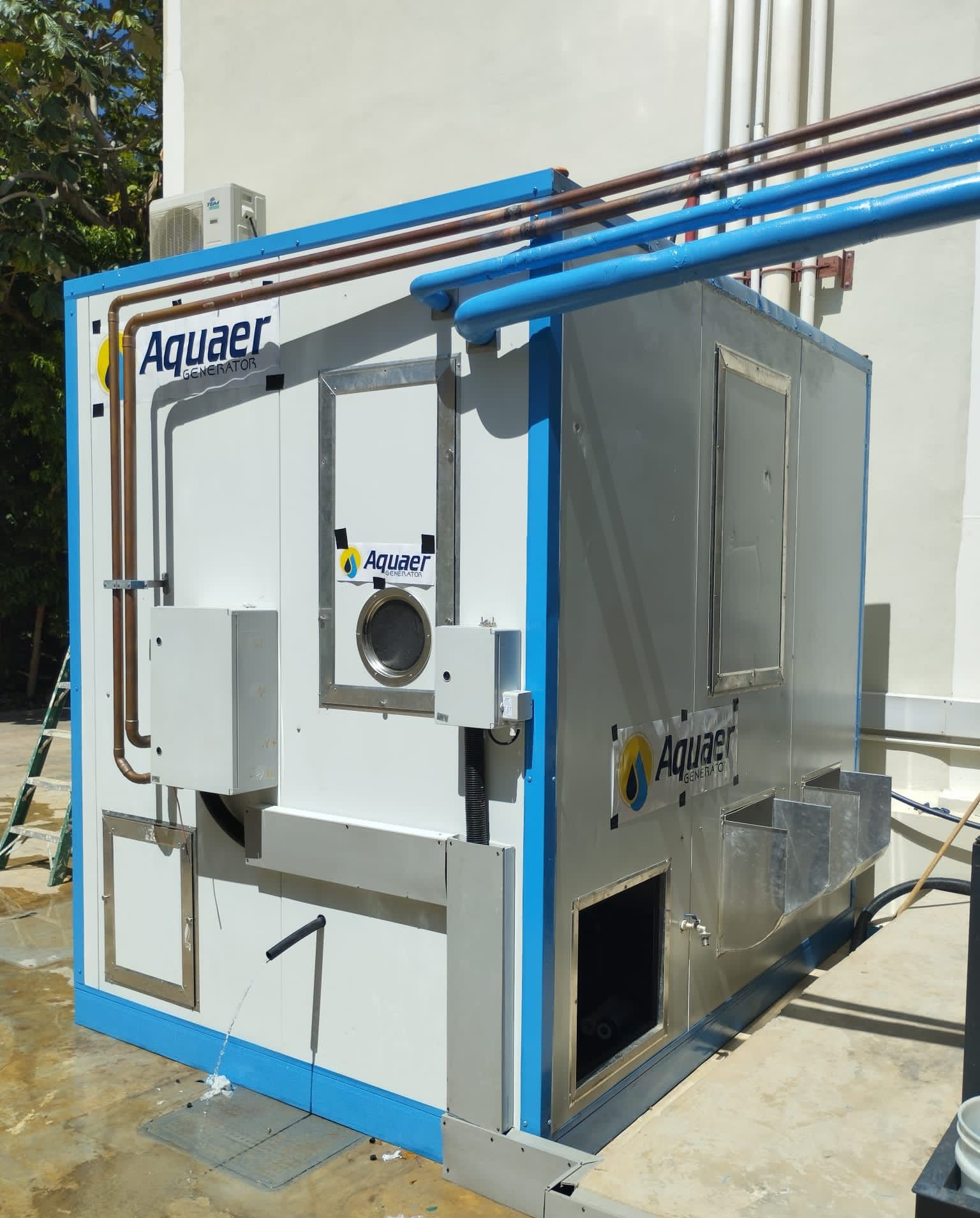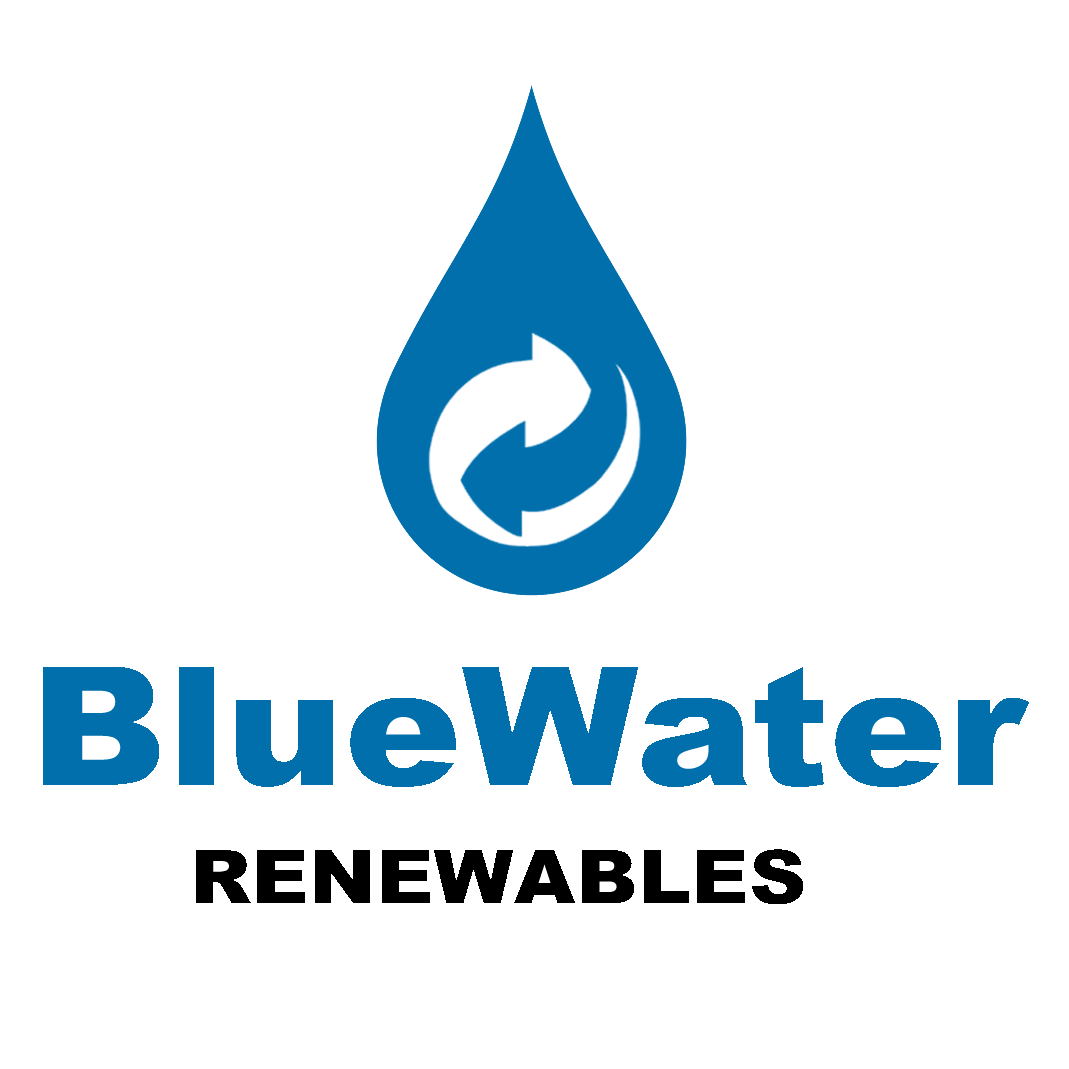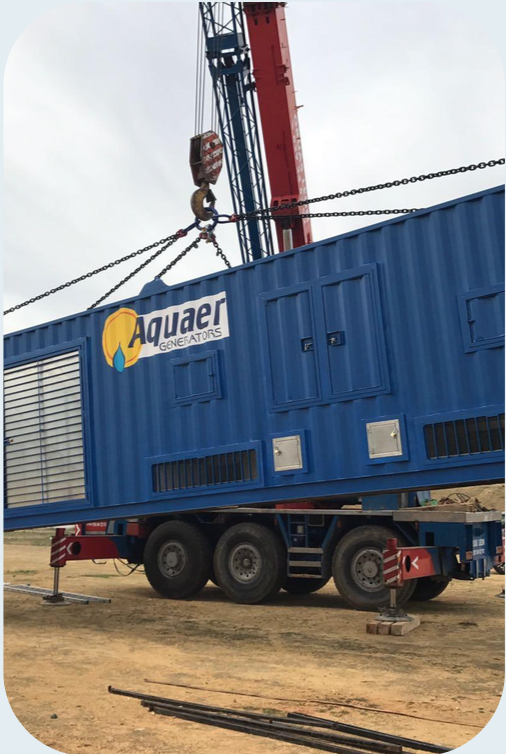AWG MODELS
ABUNDANTIA
PRODUCES up to 5.000 LITRES / DAY or 1320 GALLONS / DAY
Height: 259 cm
Width: 610 cm
Length: 224 cm
Power: 89 Kw
ABUNDANTIA PLUS
PRODUCES 9.000 to 20.000 LITRES / DAY or 5200 GALLONS / DAY
Height: 270 cm
Width: 1270 cm
Length: 244 cm
Power: 160 Kw
CUSTOM ABUNDANTIA PLUS
PRODUCES up to 98,000 LITERS / DAY or 26,000 GALLONS / DAY
Custom Design & Engineering
Variable gas: Freon, Ammonia, Absorption
Power Requirements: Variable— Quote Source




Benefits of Atmospheric Water Generation
All fresh water supplies around the world are endangered due to population increases, overuse, agriculture and industrial, global warming (less rainfall and continuous droughts), groundwater depletion, and surface water shrinking. We are now facing serious water shortages and uncertain times on earth. Specifically, over the past 250 years mankind has not been kind to mother earth according to the Water Conservancy Group in the United States. We are now paying the price.
Oceans could be tapped for nearly 97 percent of the water on Earth is confined in oceans but is too salty to drink or use in other applications. Desalination is very costly and energy intensive along with the environmental issues it creates and, for the most part, is only available near coastlines. In the atmosphere there is approximately 3,100 cubic miles of water vapor (37,500,000,000,000,000: 37.5 quadrillion gallons of water). That is more water than all of the available freshwater sources on earth. Water vapor is an unlimited resource that is continuously replenished by the planet’s hydrologic cycles, so taking water from the air will not harm the environment and the technology has advanced to a degree to allow millions of gallons to be captured daily and recycled continuously with the technology advancing constantly. Atmospheric water generation (AWG) is cutting edge technology.
Atmospheric water generators (AWG) have been developed to squeeze water from the air. The good news is that AWG technologies continue to advance, often using renewable energy to extract clean and purified water in surprisingly high quantities. Capacities range from home-based units up to 20 liters per day to commercial and industrial systems that generate up to hundreds of thousands of gallons per day.
Water production rates are largely controlled by air temperature and humidity. Ideal operating temperatures are 21-32 ºC with relative humidity between 40 percent and 100 percent. Some systems, however, can still produce significant water volumes in desert conditions of 12 percent to 20 percent relative humidity.
Condensing water from the atmosphere will be one of the most important innovations in the coming years as freshwater becomes scarce and controlled due to overpopulation, government policies, geopolitics, and climate change. It has been estimated that nearly 90 countries will be facing severe water shortages by 2050, according to estimates from the UN University’s Canadian-based Institute for Water, Environment and Health.
Therefore, demand for AWG is understandably high. The value of the AWG market is expected to grow by about $4 billion from 2020 to 2026, at a compounded annual growth rate of 21 percent. AWG systems can also provide a mobile, or even off-grid, reliable water supply. In some cases, they can even reduce the need for expensive water infrastructure.



